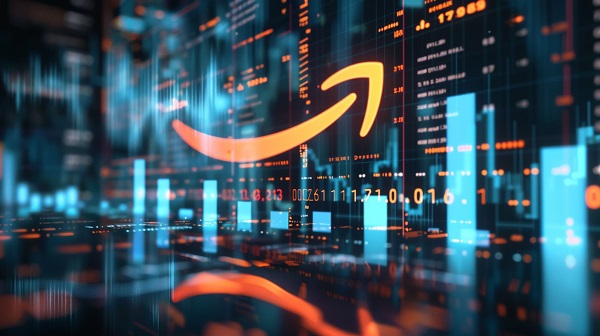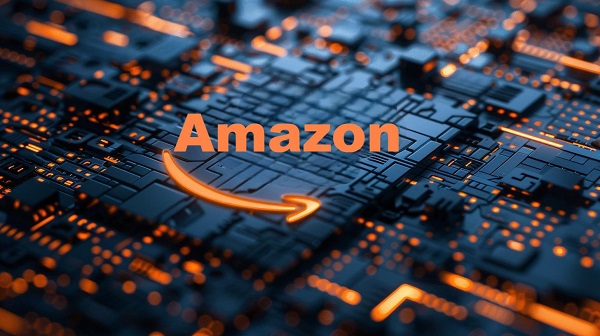Unblock Games at School: A Step-by-Step Proxy Guide
Unblock games at school with proxies! Learn HTTP, SOCKS5, and WebSocket tricks with GoProxy.
Apr 25, 2025
Learn 3 proven Python methods to scrape Amazon prices in 2025, from basic Requests to Smartproxy API, for reliable, scalable data.
Amazon’s dynamic pricing—shifting up to 2.5 million times daily—presents a goldmine for eCommerce sellers, marketers, and shoppers aiming to stay ahead. Scraping Amazon prices with Python offers a powerful, customizable way to monitor these fluctuations, extract actionable data, and drive informed decisions.
This guide dives into three proven methods tailored for 2025, blending practicality with cutting-edge techniques to meet the demands of scale, reliability, and anti-bot evasion. Whether tracking competitor prices or hunting for deals, these step-by-step approaches deliver results.

Price scraping empowers businesses and individuals alike. Sellers benchmark against competitors, eCommerce platforms optimize pricing strategies, marketers uncover trends, and shoppers snag discounts—like the developer who saved $220 on a $1,500 laptop by catching a flash sale. With Python, this process becomes scalable and precise, leveraging libraries and APIs to tackle Amazon’s complexities.
This beginner-friendly method uses Python’s requests and BeautifulSoup libraries to fetch and parse Amazon product pages. It’s ideal for small-scale projects or learning the ropes.
1. Setup: Install prerequisites (pip install requests beautifulsoup4).
2. Fetch Data: Send a GET request to an Amazon product URL (e.g., https://www.amazon.com/dp/B0BSHF7WHW) with headers mimicking a browser:
python
import requests
from bs4 import BeautifulSoup
url = "https://www.amazon.com/dp/B0BSHF7WHW"
headers = {
"User-Agent": "Mozilla/5.0 (Windows NT 10.0; Win64; x64) Chrome/120.0.0.0",
"Accept-Language": "en-US,en;q=0.9"
}
response = requests.get(url, headers=headers)
3. Parse Price: Extract the price using BeautifulSoup:
python
soup = BeautifulSoup(response.text, "html.parser")
price = soup.find("span", class_="a-price").find("span").text
print(price) # Outputs: "$99.99"
4. Handle Errors: Wrap in try-except blocks to manage missing elements.
Pros: Simple, no-cost setup.
Cons: Struggles with JavaScript-rendered content and Amazon’s anti-bot measures (e.g., CAPTCHAs). Frequent IP blocks limit scalability.
💡 2025 Tip: Rotate User-Agent strings with libraries like fake-useragent to dodge basic detection, though this won’t fully bypass advanced protections.
Amazon often loads prices via JavaScript, rendering static requests ineffective. Selenium, a browser automation tool, handles this by simulating a real user.
1. Setup: Install Selenium (pip install selenium) and a WebDriver (e.g., ChromeDriver).
2. Automate Browsing:
python
from selenium import webdriver
from selenium.webdriver.chrome.options import Options
from selenium.webdriver.common.by import By
options = Options()
options.add_argument("--headless") # Run without UI
driver = webdriver.Chrome(options=options)
driver.get("https://www.amazon.com/dp/B0BSHF7WHW")
3. Extract Price:
python
price = driver.find_element(By.CSS_SELECTOR, "span.a-price > span").get_attribute("textContent")
print(price)
driver.quit()
4. Schedule Runs: Use time.sleep() or cron jobs for periodic checks.
Pros: Captures JavaScript-rendered data, mimics human behavior.
Cons: Slower than static scraping, resource-heavy, and still vulnerable to IP bans at scale.
💡 2025 Insight: Pair Selenium with proxy rotation (e.g., via selenium-wire) to reduce blocking risks, a tactic gaining traction in recent blogs for handling Amazon’s evolving defenses.
For reliability and scale, third-party APIs like GoProxy’s eCommerce Scraping API outshine manual methods. Designed for Amazon, it handles proxies, CAPTCHAs, and parsing automatically.
1. Sign Up: Register at GoProxy and grab an API key (7-day trial available).
2. Query API:
python
import requests
url = "https://scraper-api.GoProxy.com/v2/scrape"
payload = {
"target": "amazon_pricing",
"query": "B09715G57M", # ASIN
"parse": True
}
headers = {"authorization": "Basic YOUR_AUTH_TOKEN"}
response = requests.post(url, json=payload, headers=headers)
data = response.json()
print(data["results"]["pricing"][0]["price"]) # Outputs: 69.99
3. Export Data: Save as JSON/CSV for analysis.
Pros: 100% success rate, global coverage, no maintenance needed.
Cons: Paid service, though cost-effective for scale (starts at $50/month).
💡 2025 Prediction: As Amazon tightens anti-scraping measures (noted in recent TOP 10 posts), APIs with built-in proxy rotation and CAPTCHA-solving will dominate, especially for businesses scraping thousands of products.

Scraping Amazon for pricing data and other critical e-commerce insights is a powerful strategy for businesses aiming to stay competitive. However, Amazon’s sophisticated anti-scraping measures—such as CAPTCHAs, IP blocking, dynamic HTML structures, JavaScript rendering, and advanced anti-bot systems—pose significant challenges.
These defenses are designed to protect Amazon’s vast data ecosystem and thwart automated access, making it difficult for businesses to extract information at scale using traditional methods.
Fortunately, GoProxy’s e-commerce data scraping solutions provide a robust and reliable way to bypass these obstacles, enabling businesses to access the data they need for price monitoring, inventory tracking, competitor analysis, and market research.
Amazon employs a multi-layered approach to deter web scraping, ensuring its data remains secure. Here’s a breakdown of the key defenses businesses encounter:
CAPTCHAs: Amazon uses CAPTCHAs to distinguish human users from bots. These challenges are triggered by unusual activity, such as rapid or repetitive requests from a single IP, halting automated scraping efforts.
IP Blocking: Excessive requests from one IP address lead to temporary or permanent bans, a common roadblock for scrapers operating at scale.
Dynamic HTML Structures: Amazon frequently alters its page layouts and HTML elements, breaking scrapers that depend on fixed selectors or static page structures.
JavaScript Rendering: Prices, product details, and other key data are often loaded dynamically via JavaScript, rendering them invisible to basic scrapers that only fetch static HTML.
Advanced Anti-Bot Systems: Amazon’s algorithms analyze behavioral patterns—like request frequency, user-agent consistency, and even mouse movements—to detect and block automated activity.
These measures create a formidable barrier, but GoProxy’s tailored proxy solutions, designed specifically for e-commerce data scraping, provide businesses with the tools to navigate these challenges effectively.

GoProxy’s e-commerce solutions are built to tackle Amazon’s anti-scraping defenses head-on. With a massive pool of over 90 million residential IPs across 195+ countries, advanced rotation capabilities, and anti-detection features, GoProxy ensures uninterrupted access to Amazon’s data. Here’s how it addresses each of Amazon’s protective layers:
CAPTCHAs are a frequent hurdle, but GoProxy’s rotating residential proxies minimize their impact. By cycling through a diverse range of IP addresses sourced from real residential networks, these proxies simulate organic user behavior from different locations. This reduces the likelihood of triggering Amazon’s CAPTCHA checks, as each request appears to come from a unique, legitimate user. GoProxy’s high-quality residential IPs are trusted by websites like Amazon, ensuring a lower detection rate compared to datacenter proxies.
IP blocking occurs when Amazon identifies bot-like patterns, such as too many requests from a single IP. GoProxy counters this with its extensive network of over 90 million IPs, allowing businesses to distribute scraping requests across a wide array of addresses. The automatic IP rotation feature ensures that no single IP is overutilized, keeping request patterns below Amazon’s detection threshold. This scalability is ideal for large-scale operations targeting thousands of product pages daily.
Amazon’s ever-changing HTML layouts can disrupt scrapers reliant on consistent page structures. While GoProxy doesn’t parse HTML directly, its proxies provide consistent and reliable access to Amazon’s pages, even as they evolve. This uninterrupted connectivity allows businesses to pair GoProxy with adaptive scraping tools that can adjust to layout changes, ensuring long-term scraping success.
Much of Amazon’s critical data, like pricing and stock levels, is loaded via JavaScript, requiring scrapers to render pages fully. GoProxy’s proxies integrate seamlessly with headless browsers (e.g., Selenium, Puppeteer, or Playwright), which emulate real user interactions and execute JavaScript to access dynamic content. By providing stable, high-speed connections through residential IPs, GoProxy ensures these tools can scrape fully rendered pages without interruptions.
Amazon’s anti-bot systems scrutinize request behavior to identify automation. GoProxy enhances evasion through user-agent rotation, randomized request timing, and residential IP authenticity, mimicking human browsing patterns. This multi-faceted approach reduces the risk of detection, allowing scrapers to operate discreetly and efficiently.
Interested in a customized web scraping service? Check GoProxy Custom Web Data Scraping Solutions - Free Demo Available
Scraping Amazon prices with Python offers three tiers: basic for beginners, Selenium for dynamic needs, and APIs for scale. Each balances cost, complexity, and reliability, catering to diverse user goals—from casual deal-hunting to enterprise-grade monitoring. As Amazon evolves, staying ahead means embracing robust, adaptable tools.
Amazon’s anti-scraping walls are a significant challenge in the program, but they don’t have to stop businesses from accessing vital e-commerce data. More and more users choose GoProxy’s advanced proxy solutions for — our featuring rotating residential IPs, a massive global network, and anti-detection capabilities—empowering businesses to bypass CAPTCHAs, avoid IP blocks, and scrape dynamic content with ease. By providing reliable, scalable, and cost-effective tools, GoProxy unlocks the full potential of Amazon data for price monitoring, inventory tracking, and market analysis, driving growth and competitiveness in the e-commerce sector.
For more details on how GoProxy can transform your data scraping strategy, talk with our experts or join our topics on GoProxy social communities.
Many users worry that scraping Amazon prices requires advanced coding skills. With GoProxy, you don’t need to be a tech expert. GoProxy’s eCommerce scraping solutions include user-friendly tools and integrations that simplify the process. By combining GoProxy’s rotating proxies with pre-built scraping libraries or platforms (like Python with Scrapy), users can set up automated price extraction with minimal effort. GoProxy also provides documentation and support to guide beginners through the setup.
Amazon frequently updates its prices based on demand, competition, and other factors, which can challenge scraping efforts. GoProxy ensures you capture these changes by offering real-time proxy access through its global network of residential and mobile IPs. This allows users to scrape dynamic pricing data as it updates, delivering accurate and actionable insights for pricing strategies or market monitoring.
Users often fear that detection could lead to IP bans or legal repercussions. While Amazon employs anti-scraping measures like CAPTCHAs and rate limits, GoProxy minimizes this risk with rotating proxies that switch IPs frequently and mimic human behavior. If detection occurs, GoProxy’s high success rate and vast IP pool allow users to quickly switch to new proxies, ensuring uninterrupted scraping with minimal downtime.
Privacy and security are major concerns when handling scraped data or using proxies. GoProxy prioritizes user safety by providing secure, encrypted connections through its proxy network. Its residential and mobile proxies ensure anonymity, shielding your identity from Amazon’s tracking systems. Additionally, GoProxy adheres to strict data protection standards, giving users peace of mind while collecting price data for business use.
With many proxy services available, users often wonder what sets GoProxy apart. GoProxy stands out with its eCommerce-optimized solutions, offering a tailored experience for scraping Amazon prices at scale. Its combination of rotating residential proxies, global scalability, competitive pricing, and high success rates ensures reliability and value. Unlike generic providers, GoProxy’s focus on eCommerce delivers faster, more accurate results, making it the preferred choice for businesses and individuals alike.
< Previous
Next >
 Cancel anytime
Cancel anytime No credit card required
No credit card required